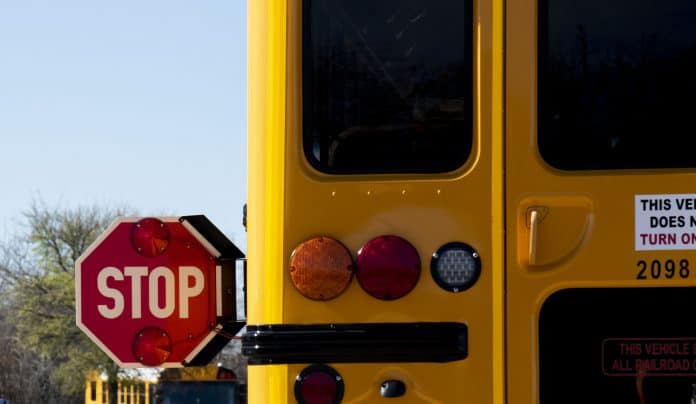Back in the day, a couple cameras, front and back, provided the beginning of video as an
asset on school buses. Footage provided some evidence to confirm behavioral issues and
driver actions. It helped when dealing with “he said, she said.” and low resolution, low frame rate, historical records.
Fast forward to today and video means something completely different to school bus professionals. Video is now used to provide detailed evidence of stop-arm violations, passenger and driver activity inside the bus, activity around doors and lifts, and to place video location geospatially, track the bus historically and in real time, and offer evidentiary background for insurance and legal processes. Video is now used to review driver performance and operational issues like bus stop activity. The original basic tool is now an integral technology within the modern school bus operation, where technology plays a leading role.
GPS has been attached to video for some time now, but advances in review software have made the link between video and tracking powerful. With the right review software, locating video by selecting a location on a map can speed up the process, which creates a great review tool. Want to review bus stop procedure? Click on each stop along the route and jump to the related video. Locate idling events with a simple mouse click. Create a spatial link with video records to make the whole process come to life. The evidence becomes more compelling.
School bus operators and insurance providers have come to understand the value of “seeing” the road ahead as well as behind. Video evidence of accidents and incidents around the exterior of the bus can make the difference in determining liability. Reducing the time to a final legal determination saves money and the anguish attached to difficult outcomes. A video system with a proprietary process that can satisfy a court of its authenticity will greatly assist when solid evidence is needed.
Video programs, like much of the technology now used in operations, have had to be added into the daily work schedules of both administrative and maintenance staff. Indeed, in large fleets we often find staff members dedicated to running the video program. Video is reviewed in the transportation department and at the school. Getting video in front of the right person at the right time and place becomes a major issue to manage. The old approach of pulling hard drives from the bus has become too time consuming in the modern, fast paced environment, and the industry now looks to wireless and cloud-based solutions. This piece to the puzzle is evolving at a rapid rate. Transferring video is now done via Wi-Fi and cellular service. Getting the right combination is something to be studied. Jumping to a cellular process is now possible, but performance should be examined.
What are your expectations? If speed is your focus, pay attention to how that translates in actual performance. Uploading seven cameras worth of data at high resolution and frame rate is a lot of data. Time becomes an issue. Figure out the actual performance and compare to your expectations. Do they match? Is there a better formula? That is to say, Wi-Fi will continue to play a role especially in large fleets with complex review programs. These technologies can make management of video very efficient if we get the technology mix right. And what about the next step to use video hardware as the data source for other technology like live tracking and parent apps? This is possible with the right integrated video hardware.
Video evidence of stop-arm violations is now being used across the country. Again, there are different approaches taken and views of effectiveness. Should we be using this technology to punish violators by marrying the evidence with the delivery of citations? Or should we be educating? There are merits to both approaches and the technology is available.
Of interest from a transportation department perspective is the involvement of other parties when the collection of fines is introduced. Many players need to line up for this to work. Law enforcement, the courts and the municipality can all have a role and look for a piece of the pie. Where does the transportation department and school district fit in other than the obvious supply of the buses? Equipment is installed and must be maintained. Who is responsible? What does transportation get out of it? What are we doing to actually reduce violations? Many questions to be considered and answered.
Lastly, a bit about life cycle. As stated, video solutions are very different now, and much of the equipment out in the field is obsolete. Life cycle has been addressed properly by neither the customer nor the supplier. We are all guilty of not advising on life cycle. Consider the computer you are likely using right now. If it is over four to five years old, you are likely experiencing poor performance and lacking in what advanced tech can do for you. DVRs are computers, and they age. Performance will decline, and with age comes a lack of up-to-date tools that can truly improve your operations. Consideration must be given to budgeting for renewal. Buses get old and tired, and so do video systems. Video programs can be a great advantage to the operating professional. Understanding advancements and new approaches is worth some of your valuable time.
Editor’s Note: As reprinted in the November 2023 issue of School Transportation News.

Robert Scott is senior vice president and co-founder of 247Security. He has worked in the school bus industry of over 40 years as transportation director, private bus contractor, consultant and technology supplier, focused for the last 22 years on video. Robert splits his time between 247’s operations in both the U.S. and Canada. He can be contacted at roberts@247securityinc.com.
Related: Florida Allows School Bus Illegal Passing Video Enforcement
Related: Speeding Up Stop-Arm Violation Detection and Resolution
Related: (Free Webinar) Caught on Camera: How Stop-Arm Programs Prevent Illegal Passing
Related: Caught on Camera: The Growing Wave of Stop-Arm Enforcement
















